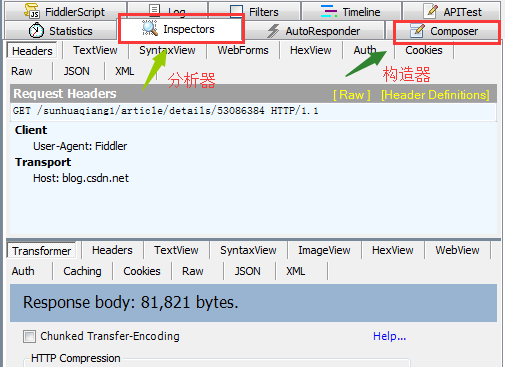Springboot使用AOP时,需不需要引入AspectJ?
在Spring Boot中使用AOP时,是否需要引入AspectJ取决于你选择的具体AOP实现方式。以下是详细分步说明:
1. 默认场景:使用Spring AOP(基于代理)
不需要引入AspectJ依赖,但需要以下步骤:
步骤1:添加Spring Boot Starter AOP依赖
在 pom.xml(Maven)或 build.gradle.kts(Gradle)中添加Spring Boot的AOP支持:
<!-- Maven -->
<dependency><groupId>org.springframework.boot</groupId><artifactId>spring-boot-starter-aop</artifactId>
</dependency>
// Gradle Kotlin DSL
dependencies {implementation("org.springframework.boot:spring-boot-starter-aop")
}
步骤2:编写切面类
使用Spring AOP的注解(基于AspectJ语法,但无需AspectJ库):
import org.aspectj.lang.annotation.Aspect;
import org.aspectj.lang.annotation.Before;
import org.springframework.stereotype.Component;@Aspect
@Component
public class LoggingAspect {@Before("execution(* com.example.service.*.*(..))")public void logBeforeMethod() {System.out.println("方法即将执行...");}
}
步骤3:验证功能
Spring AOP会通过动态代理(JDK动态代理或CGLIB)拦截Spring管理的Bean的方法调用,例如:
@Service
public class UserService {public void createUser(String name) {System.out.println("创建用户: " + name);}
}
调用 createUser 时,控制台会输出:
方法即将执行...
创建用户: Alice
Spring AOP的限制
- 仅支持方法级别的拦截,无法拦截构造器、字段访问、静态方法等。
- 仅作用于Spring管理的Bean,无法拦截非Spring容器管理的对象(如直接new创建的对象)。
2. 高级场景:使用AspectJ(编译时/加载时织入)
需要显式引入AspectJ依赖,适用于以下需求:
- 拦截非Spring管理的对象。
- 需要更细粒度的切面(如构造器、字段修改)。
- 使用编译时(CTW)或加载时织入(LTW)。
步骤1:添加AspectJ依赖
<!-- Maven -->
<dependency><groupId>org.aspectj</groupId><artifactId>aspectjrt</artifactId><version>1.9.21</version>
</dependency>
<dependency><groupId>org.aspectj</groupId><artifactId>aspectjweaver</artifactId><version>1.9.21</version>
</dependency>
// Gradle Kotlin DSL
dependencies {implementation("org.aspectj:aspectjrt:1.9.21")implementation("org.aspectj:aspectjweaver:1.9.21")
}
步骤2:配置AspectJ织入
- 编译时织入(CTW):使用Maven/Gradle插件(如
aspectj-maven-plugin)在编译阶段织入切面。 - 加载时织入(LTW):在JVM启动参数中添加
-javaagent:path/to/aspectjweaver.jar。
示例(Maven CTW配置):
<build><plugins><plugin><groupId>org.codehaus.mojo</groupId><artifactId>aspectj-maven-plugin</artifactId><version>1.14.0</version><configuration><complianceLevel>17</complianceLevel><source>17</source><target>17</target><aspectLibraries><aspectLibrary><groupId>org.springframework</groupId><artifactId>spring-aspects</artifactId></aspectLibrary></aspectLibraries></configuration><executions><execution><goals><goal>compile</goal></goals></execution></executions></plugin></plugins>
</build>
步骤3:编写支持AspectJ的切面
@Aspect
public class FieldAccessAspect {// 拦截对字段的访问@Pointcut("get(* com.example.model.User.name)")public void userFieldAccess() {}@Before("userFieldAccess()")public void logFieldAccess() {System.out.println("用户名字段被访问了!");}
}
步骤4:验证功能
即使直接通过 new 创建对象,切面仍会生效:
public class Main {public static void main(String[] args) {User user = new User(); // 非Spring管理的对象System.out.println(user.getName()); // 触发切面逻辑}
}
输出:
用户名字段被访问了!
Alice
3. 总结
| 场景 | 是否需要AspectJ | 实现方式 | 适用情况 |
|---|---|---|---|
| Spring AOP | 否 | 动态代理(JDK/CGLIB) | 拦截Spring Bean的方法调用 |
| AspectJ(CTW/LTW) | 是 | 编译时或加载时织入 | 需要拦截非Spring对象、字段、构造器等 |
- 默认推荐:使用Spring AOP(无需AspectJ),适合大多数应用场景。
- 高级需求:引入AspectJ并配置织入,适用于需要更强大AOP功能的场景。
在 Spring Boot 应用中使用面向切面编程(AOP)并不强制要求引入 AspectJ,因为 Spring AOP 已经能够满足大多数的应用场景。Spring AOP 默认使用的是基于代理(Proxy-based)的方式来实现 AOP,它依赖于 Spring 的 IoC 容器,并且对于方法调用的拦截非常有效。
使用 Spring AOP 的情况
- 简单的方法拦截:如果你只需要对方法进行前置、后置或环绕通知(Advice),那么 Spring AOP 就足够了。
- 无需额外配置:Spring Boot 自动为你配置好了一切,只需添加相应的依赖和注解即可开始使用 AOP 功能。
何时需要引入 AspectJ
尽管 Spring AOP 足够强大,但在某些情况下,你可能需要考虑使用 AspectJ:
- 更强大的织入能力:AspectJ 支持更多类型的切入点(Pointcuts),包括对属性访问、异常处理等的拦截,而不仅仅是方法执行。
- 编译时、加载时织入:如果你希望在编译时或类加载时就完成织入工作,而不是在运行时通过代理来实现,那么你需要使用 AspectJ。
- 针对非Spring管理的Bean:Spring AOP 只能为 Spring 容器管理的 Bean 提供代理支持,而对于那些不在 Spring 管理范围内的对象,如果想要应用 AOP 切面,则需要使用 AspectJ。
如何引入 AspectJ
要在 Spring Boot 中集成 AspectJ,首先需要在 build.gradle 或 pom.xml 文件中添加 AspectJ 相关的依赖:
Gradle 示例
dependencies {implementation 'org.aspectj:aspectjrt'implementation 'org.aspectj:aspectjweaver'
}
Maven 示例
<dependencies><dependency><groupId>org.aspectj</groupId><artifactId>aspectjrt</artifactId><version>你的版本号</version></dependency><dependency><groupId>org.aspectj</groupId><artifactId>aspectjweaver</artifactId><version>你的版本号</version></dependency>
</dependencies>
然后根据你的需求配置 AspectJ 编译器或者加载时织入(LTW)。
总结来说,除非你需要 AspectJ 提供的高级功能或遇到了 Spring AOP 无法解决的问题,否则一般情况下不需要特别引入 AspectJ 来使用 AOP。Spring AOP 已经提供了足够的功能来处理常见的需求。
在Spring Boot中使用AOP时,可以引入AspectJ,但并非绝对必要,这主要取决于具体需求和项目配置。
首先,Spring Boot默认已经包含了对于AOP的支持,它基于Spring AOP框架,并提供了简化的配置和使用方式。在Spring Boot项目中,开发者通常只需添加相关的依赖(如spring-boot-starter-aop),并定义切面类即可实现AOP功能。这些切面类可以使用@Aspect注解进行标注,并通过定义切点和通知来指定切面行为和应用位置。
然而,AspectJ是一个更为强大和灵活的面向切面编程框架,它扩展了Java编程语言,并提供了丰富的AOP语法和功能。AspectJ支持编译时织入和加载时织入,能够在不修改字节码的情况下增强类的功能。此外,AspectJ还提供了更细粒度的控制和更广泛的功能,如数据埋点、日志记录、性能统计、安全控制、事务处理、异常处理等。
在Spring Boot项目中,如果开发者需要使用AspectJ提供的这些高级功能,或者希望获得更细粒度的控制,那么可以引入AspectJ。这通常需要在项目中添加AspectJ的依赖,并确保Spring Boot应用开启了AspectJ自动代理的支持(通常通过@EnableAspectJAutoProxy注解实现)。
但请注意,引入AspectJ可能会增加应用程序的运行时开销,因为它需要处理切入点和通知。然而,这种影响通常是可以接受的,特别是考虑到它带来的代码清晰性和可维护性。如果性能是一个关键问题,建议对性能关键的部分进行基准测试,并根据需要优化或禁用AspectJ的相关功能。
综上所述,Spring Boot使用AOP时是否需要引入AspectJ取决于具体需求和项目配置。如果只需基本的AOP功能,则无需引入AspectJ;如果需要更高级的功能或更细粒度的控制,则可以考虑引入AspectJ。
在Spring Boot中使用AOP时,可以引入AspectJ,但并非绝对必要,这主要取决于具体需求和项目配置。
- 需要引入AspectJ的情况
如果希望在Spring Boot项目中充分利用AspectJ提供的强大功能和细粒度控制,如编译时织入、加载时织入等,那么引入AspectJ是有益的。通过AspectJ,可以定义更复杂的切点表达式,实现更灵活的切面逻辑。
- 不需要引入AspectJ的情况
Spring Boot本身已经集成了Spring AOP,这提供了一种基于动态代理的运行时织入机制。对于大多数Spring Boot项目来说,Spring AOP已经足够满足日志记录、事务管理、权限校验等常见的横切关注点需求。因此,在不需要AspectJ的特定功能时,可以仅使用Spring AOP而不引入AspectJ。
- 使用Spring AOP的基本步骤
- 引入依赖:虽然Spring Boot默认包含AOP的依赖,但为了明确起见,有时可以在
pom.xml中显式添加spring-boot-starter-aop依赖。 - 启用AOP:在启动类或配置类上添加
@EnableAspectJAutoProxy注解以启用AOP功能。不过,需要注意的是,@SpringBootApplication注解已经包含了@EnableAspectJAutoProxy,因此在大多数情况下无需额外添加。 - 定义切面类:使用
@Aspect注解定义一个切面类,并在其中定义切点(使用@Pointcut注解)和通知(如@Before、@After、@Around等注解)。
AspectJ与Spring AOP的区别
- 织入时机:AspectJ支持编译时织入和加载时织入,而Spring AOP主要基于动态代理实现运行时织入。
- 功能和控制粒度:AspectJ提供了更细粒度的控制和更广泛的功能,适用于更复杂的AOP场景。而Spring AOP则更易于集成和使用,特别是在Spring应用程序中。
综上所述,在Spring Boot中使用AOP时,是否引入AspectJ取决于具体需求和项目配置。对于大多数常见需求,Spring AOP已经足够;而对于更复杂或特定的AOP需求,可以考虑引入AspectJ以增强功能和灵活性。



















